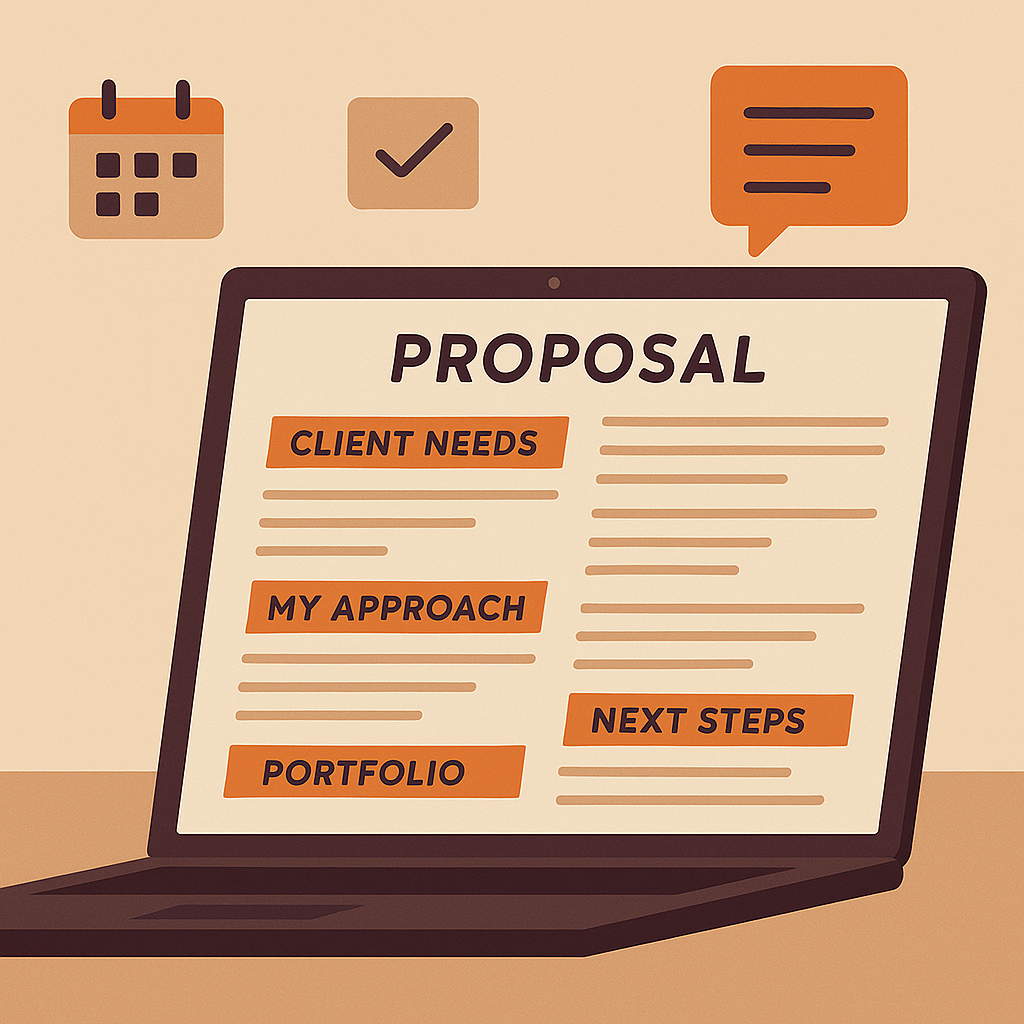
The Freelancer’s Guide to Writing Winning Proposals

Seal the Deal: How to Write Freelance Proposals That Actually Win Work
Proposals are the freelance world’s first handshake. Done right, they open doors. Done wrong, they get buried. Whether you're pitching through platforms like Upwork, Freelancer, Fiverr, Contra, Xolo or sending cold emails to potential clients, a strong proposal can be your foot in the door and your first paycheck.
Here’s your ultra-specific, no-fluff guide to writing freelance proposals that land real projects.
1. Start with the client’s exact language
Forget generic intros. Open with a single line that mirrors the client’s own words from the job post. For example:
“You mentioned you’re looking for a copywriter to revamp your email funnel, here’s how I can help.”
This immediately signals you read their brief and aren’t sending a template blast.
2. Break it down into clear sections
Use bold headers to create sections like:
-
Why I’m a fit (1-2 sentences tying your experience directly to their project)
-
How I’ll do It (3-5 bullet steps explaining your process)
-
Proof you can trust (1-2 links to similar work, with 1-sentence context each)
-
Timeline & availability (e.g., “I can start Monday and finish by Thursday”)
-
Let’s talk (clear CTA with link to schedule or a specific ask for reply)
3. Include relevant metrics
Clients love numbers. Wherever possible, add quantifiable proof:
-
“I grew a client’s SEO traffic by 47% in 3 months.”
-
“Wrote a launch sequence with 65% open rate and 12% conversion.”
-
“Delivered 14 animated reels in 6 days for a product launch.”
4. Add a personal touch (without overdoing It)
Mention something from their site or brand you genuinely liked:
“I really liked how your homepage copy focuses on wellness as empowerment—it aligns perfectly with my approach to content strategy.”
This shows you did your homework and builds quick rapport.
5. Suggest the smallest next step
Make it frictionless. Instead of “Let me know,” write:
“Would you be open to a quick 15-minute call this week to align on next steps? I’m free Tuesday 10-11am or Thursday 2-4pm.”
Include a scheduling link like Calendly if possible.
Bonus Tip: Use a proven formula
Start with a template or ask AI to give you a couple or ideas and refine them with iterations:
Hi [Client Name],
You mentioned [specific pain/need]. I’ve helped [similar client/project] by [brief result]. Here’s how I’d tackle your project:
Step 1: [short action]
Step 2: [short action]
Relevant work: [link] – this [describe result or context].
I can start [when] and finish by [when]. Would a quick chat on [date options] work?
Cheers,
[Your Name + portfolio link]
Keep It Short. Keep It Sharp.
A winning freelance proposal isn’t an essay. It’s a laser-focused offer to solve a problem—with proof, personality, and clarity.
Write fast. Write real. And follow up.
Want more freelance tips that help you win work, wow clients, and grow your business? Subscribe to the FreelasNews newsletter and stay one step ahead.


